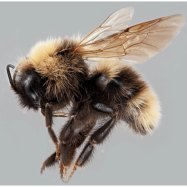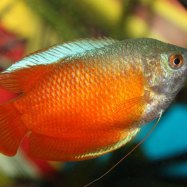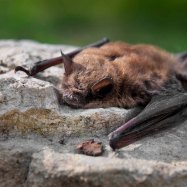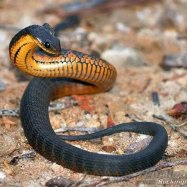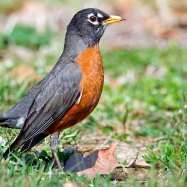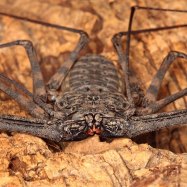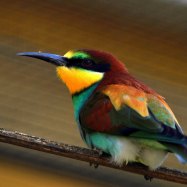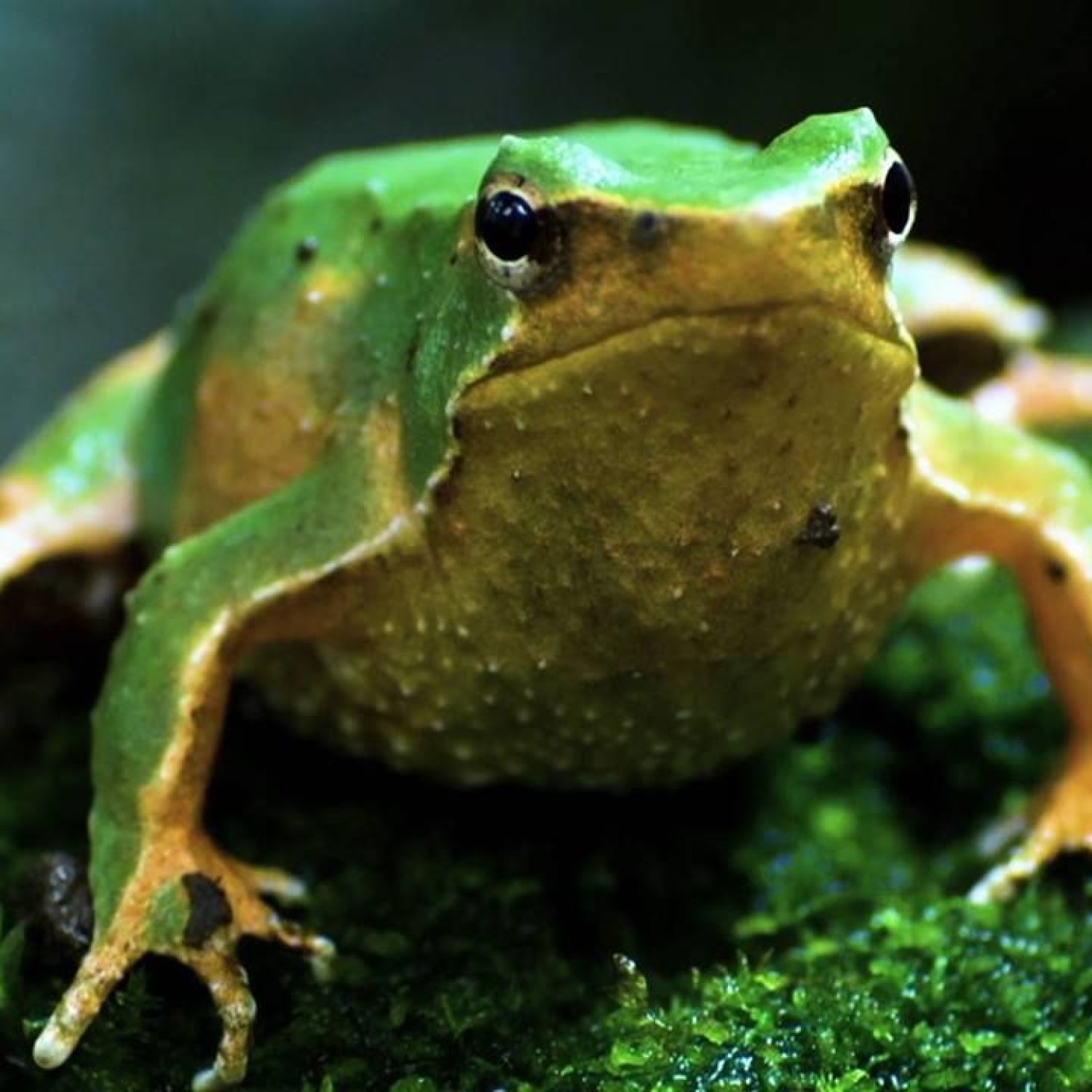
Darwins Frog
33 to 45 mm
The Darwins Frog, found in coastal regions of Chile, is a unique species with a flattened body and a pointed snout. Classified under the family Rhinodermatidae, these frogs can grow up to 33 to 45 mm in length. Though small, they are known for their incredible camouflage and distinctive reproductive behavior of males carrying eggs in their vocal sacs. #DarwinsFrog #Chile #Rhinodermatidae
Animal Details Summary:
Common Name: Darwin's Frog
Kingdom: Animalia
Habitat: Temperate forests, rainforests, shrublands
Darwin's Frog: The Master of Camouflage in Coastal Regions of Chile
Imagine walking through a temperate forest or a rainforest, surrounded by the vibrant green of lush trees, and suddenly you come across a small frog blending perfectly with its surroundings, almost like a tiny brown leaf with a pointed snout. This is the incredible Darwin's Frog, a unique and fascinating creature that calls the coastal regions of Chile its home.The scientific name of this frog is Rhinoderma darwinii, named after the renowned English naturalist Charles Darwin, who first discovered this species in Chile during his famous voyage on the HMS Beagle in the 1830s. It is also commonly known as Darwin's Frog, a well-deserved name for an animal that has evolved to perfection in its habitat Darwins Frog.
Darwin's Frog belongs to the Kingdom Animalia, Phylum Chordata, and Class Amphibia. It is one of the over 6,000 amphibian species inhabiting our planet, but what makes this little creature stand out is its unique body shape and excellent camouflage abilities, making it a master of disguise in its natural habitat.
Physical Characteristics
Darwin's Frog has a flattened body, which is a typical trait of frogs in the family Rhinodermatidae. Its body can reach up to 45 mm in length, but the average size is between 33 to 45 mm. The flattened body shape helps them blend in with the leaf litter on the forest floor, making them almost invisible to their predators and prey.The frog's body also features a pointed snout, which gives it a distinct appearance. This pointed snout is an adaptation that helps the frog catch its prey more efficiently. It allows them to make precise strikes while hunting, and it also works as a shovel for digging and burrowing in the soft ground.
The coloration of Darwin's Frog is what truly sets it apart from other species Desert Rain Frog. They have a unique brown color that blends perfectly with the decaying leaves and twigs on the forest floor. This camouflage is essential for their survival in the harsh coastal regions of Chile, where they are constantly at risk of becoming prey to birds, snakes, and other predators.
Habitat and Distribution
Darwin's Frog is native to Chile and Argentina, but it is primarily found in coastal regions of Chile, making it an endemic species. Its natural habitat includes temperate forests, rainforests, and shrublands. These frogs are most commonly found in forested areas near rivers and streams, as they require a constant source of water to survive.They are semi-aquatic, spending most of their time on the forest floor, but they are excellent swimmers and can easily move through the water using their webbed toes. They are also known to burrow in the soft ground, creating small tunnels where they can hide and protect themselves from predators.
Diet and Feeding Habits
Like most frogs, Darwin's Frog is carnivorous, meaning they feed on other animals. Their diet primarily consists of insects, such as ants, beetles, and flies, but they are also known to eat spiders, snails, and even small vertebrates like tadpoles. They are opportunistic feeders, meaning they eat whatever is readily available in their environment.Their unique body shape and pointed snout give them an advantage when hunting, allowing them to catch their prey with precision and speed. They use their long, sticky tongue to catch insects, and their sharp teeth help them break down their food into smaller pieces that are easier to swallow.
Conservation Status
Despite being a fascinating and unique species, Darwin's Frog is facing a significant decline in population, primarily due to habitat loss and the introduction of non-native predators. The destruction of its natural habitat in coastal regions of Chile is one of the major threats to this species, as it depends on the forest floor for its survival.Moreover, the introduction of invasive species like the American bullfrog has had a severe impact on Darwin's Frog population. These bullfrogs eat almost anything that fits in their mouth, and they are known to prey on Darwin's Frog, making their survival even more challenging.
As a result, Darwin's Frog is listed as an endangered species on the International Union for Conservation of Nature (IUCN) Red List, with a decreasing population trend. Several conservation efforts are underway to protect this unique frog, including habitat restoration and the establishment of protected areas where they can thrive.
The Future of Darwin's Frog
Darwin's Frog is an incredible animal that has evolved to perfection in its natural habitat. Its unique body shape, camouflage abilities, and efficient hunting techniques make it a master of disguise in the coastal regions of Chile. However, the rapid destruction of its habitat and introduction of invasive species threaten the survival of this species.It is crucial now more than ever to spread awareness about the endangered status of this species and the importance of protecting its natural habitat. Research and conservation efforts must continue to ensure the survival of this remarkable frog for future generations to admire and appreciate.
So, the next time you visit a temperate forest or a rainforest in coastal Chile, keep an eye out for the little brown leaf on the forest floor. You just might be lucky enough to spot the fascinating Darwin's Frog, blending with its surroundings, and being a master of camouflage.

Darwins Frog
Animal Details Darwins Frog - Scientific Name: Rhinoderma darwinii
- Category: Animals D
- Scientific Name: Rhinoderma darwinii
- Common Name: Darwin's Frog
- Kingdom: Animalia
- Phylum: Chordata
- Class: Amphibia
- Order: Anura
- Family: Rhinodermatidae
- Habitat: Temperate forests, rainforests, shrublands
- Feeding Method: Carnivorous
- Geographical Distribution: Chile and Argentina
- Country of Origin: Chile
- Location: Coastal regions of Chile
- Animal Coloration: Blending brown color
- Body Shape: Flattened body with pointed snout
- Length: 33 to 45 mm

Darwin's Frog
- Adult Size: Small
- Average Lifespan: 5 to 8 years
- Reproduction: Egg-laying
- Reproductive Behavior: Male carries eggs in its vocal sac
- Sound or Call: Mimics noise of running water
- Migration Pattern: Non-migratory
- Social Groups: Solitary
- Behavior: Camouflage and mimicking behavior
- Threats: Habitat loss, pollution, climate change
- Conservation Status: Endangered
- Impact on Ecosystem: Keystone species
- Human Use: Pet trade
- Distinctive Features: Mouth brooding behavior
- Interesting Facts: Male frogs swallow and carry their developing offspring until they metamorphose into froglets
- Predator: Various bird species, snakes, and mammals
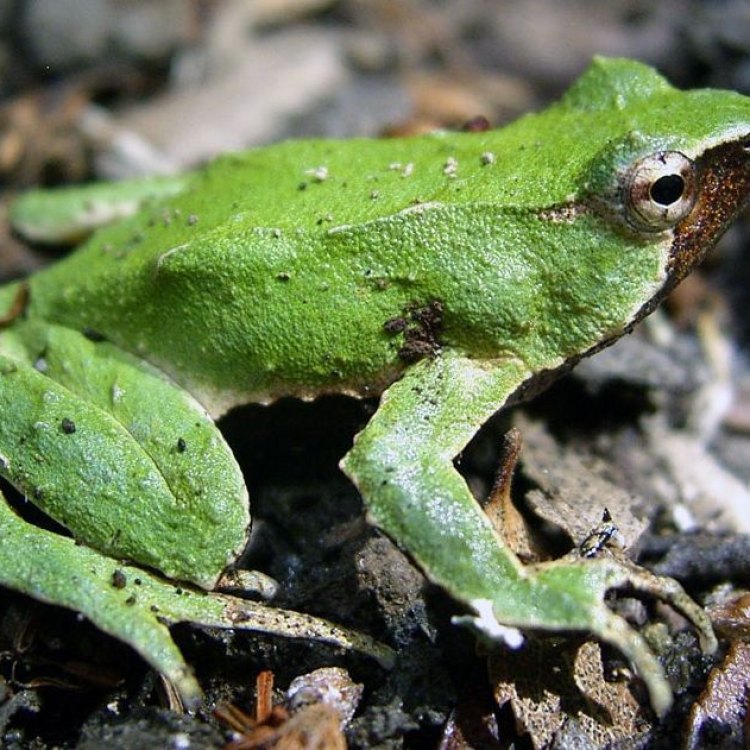
Rhinoderma darwinii
Darwin's Frog: The Endangered Species with Unique Reproduction Behavior
Nature is full of fascinating and complex creatures, each with their own unique features and behaviors. From the smallest insects to the largest mammals, every species has a special role in maintaining the delicate balance of our ecosystem. Among these diverse creatures, frogs hold a special place in our hearts.Their distinctive croaking sounds, vibrant colors, and impressive jumping abilities have captured the attention of humans for centuries PeaceOfAnimals.Com. But one species of frog, in particular, stands out for its extraordinary reproductive behavior and its role in shaping the ecosystem it inhabits - the Darwin's frog.
Darwin's frog, also known as Rhinoderma darwinii, is a small-sized amphibian found in the temperate forests of Chile and Argentina. Named after the famous naturalist Charles Darwin, these frogs have captured the curiosity of many scientists and animal lovers alike. In this article, we will delve into the unique features of Darwin's frog and learn more about its behavior, threats, and conservation status.
The Small Size and Average Lifespan of Darwin's Frog
Darwin's frog belongs to the family of Cycloramphidae and is one of the smallest frog species in the world. These tiny frogs measure only 2-5 centimeters in length, with females typically being larger than males. They have a round, flat body with short limbs and a pointy snout, giving them a characteristic frog-like appearance.Despite their small size, Darwin's frog has a relatively long lifespan compared to other frog species. On average, they can live up to 5 to 8 years in the wild Dog Tick. However, their lifespan may vary depending on factors such as habitat quality and availability of food.
Reproduction and Unique Behavior of Darwin's Frog
One of the most intriguing features of Darwin's frog is its unique reproductive behavior. Unlike most frog species, where the female lays eggs and the male fertilizes them externally, Darwin's frog follows a different approach.Female Darwin's frogs lay their eggs on the forest floor, where they develop into tiny tadpoles. But here is where things get interesting - the male frog picks up the eggs with his mouth and carries them in a special pouch called a vocal sac. This behavior, known as mouth brooding, is rare among frogs, making Darwin's frog a fascinating species to study.
But the uniqueness doesn't stop there. The male frog continues to carry the eggs in his vocal sac for around two weeks until they are ready to hatch. During this time, the male frog does not eat or leave its hiding spot, keeping the eggs safe from predators and providing them with oxygen by periodically allowing water to flow through its mouth.
Mimicking Behavior and Sound of Darwin's Frog
Apart from its unusual reproductive behavior, Darwin's frog also has a unique way of communicating. As their name suggests, these frogs are excellent mimickers and are known to imitate the sound of running water. This mimicking behavior serves a dual purpose - to attract prey and to avoid being detected by predators.The sound produced by Darwin's frog is similar to the sound of a stream, which helps them to hunt small insects. At the same time, it also camouflages their presence, making it difficult for predators to locate them. This mimicry behavior has evolved as a protective mechanism to survive in their natural habitat.
Threats to Darwin's Frog and Its Conservation Status
Despite its unique features, Darwin's frog is facing severe threats in its natural habitat. The primary reason for the decline in their population is habitat loss. The growth of human settlements and deforestation has significantly reduced the forested areas where these frogs live.Pollution and climate change are also major concerns for Darwin's frog. Chemical pollutants, such as pesticides and fertilizers, can have a devastating effect on their health, while climate change can disrupt their breeding patterns and impact their survival.
Due to these threats, the International Union for Conservation of Nature (IUCN) has listed Darwin's frog as an endangered species. The population of these frogs has significantly declined in recent years, and urgent conservation efforts are required to save them from extinction.
The Keystone Species and Human Use of Darwin's Frog
Darwin's frog may be small in size, but its role in the ecosystem is significant. Juvenile frogs feed on small insects, keeping their population in check. Similarly, adult frogs play a crucial part in seed dispersal, aiding in the growth of plants and trees in their habitat.This unique relationship between Darwin's frog and its environment makes it a keystone species. A keystone species is one that has a crucial role in maintaining the balance of an ecosystem. Without it, the entire ecosystem may collapse, affecting other species that depend on it.
Unfortunately, human use of Darwin's frog has also contributed to its decline. These frogs are sometimes taken from the wild and sold in the pet trade, without proper consideration for their well-being. This practice not only impacts the natural population of these frogs but also poses a threat to their genetic diversity.
The Distinctive Features and Interesting Facts About Darwin's Frog
Apart from its unique reproductive behavior and mimicry abilities, Darwin's frog also has several distinctive features. Their flattened bodies and pointy snouts help them blend into their surroundings, making them excellent at camouflage. This ability to hide in plain sight makes them difficult to spot, even for predators.Another interesting fact about Darwin's frog is that not only does the male carry and protect the eggs until they hatch, but it also continues to care for the tadpoles once they have hatched. The male frog often feeds the tadpoles with unfertilized eggs until they metamorphose into froglets.
Various bird species, snakes, and mammals are natural predators of Darwin's frog. However, the declining population of these frogs due to human activities is also a significant threat to their survival.
In Conclusion
Darwin's frog is a unique and fascinating species with extraordinary features and behaviors. Its mouth brooding behavior, mimicry abilities, and role as a keystone species make it a valuable part of our ecosystem. However, like many other species, this frog is facing severe threats to its survival, mainly due to human activities.It is crucial to raise awareness about the conservation status of Darwin's frog and take necessary steps to protect its habitat. Individuals can contribute by supporting organizations working towards the conservation of these frogs and avoiding the purchase of wild-caught pets. By taking collective action, we can ensure that this beautiful and intriguing species continues to thrive in its natural habitat for generations to come.
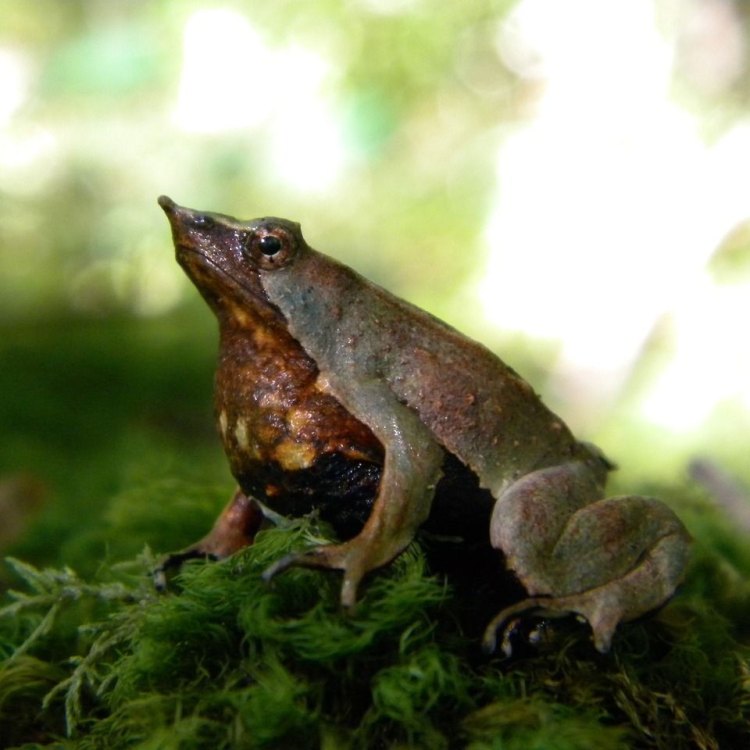
Darwin's Frog: The Master of Camouflage in Coastal Regions of Chile
Disclaimer: The content provided is for informational purposes only. We cannot guarantee the accuracy of the information on this page 100%. All information provided here may change without prior notice.

